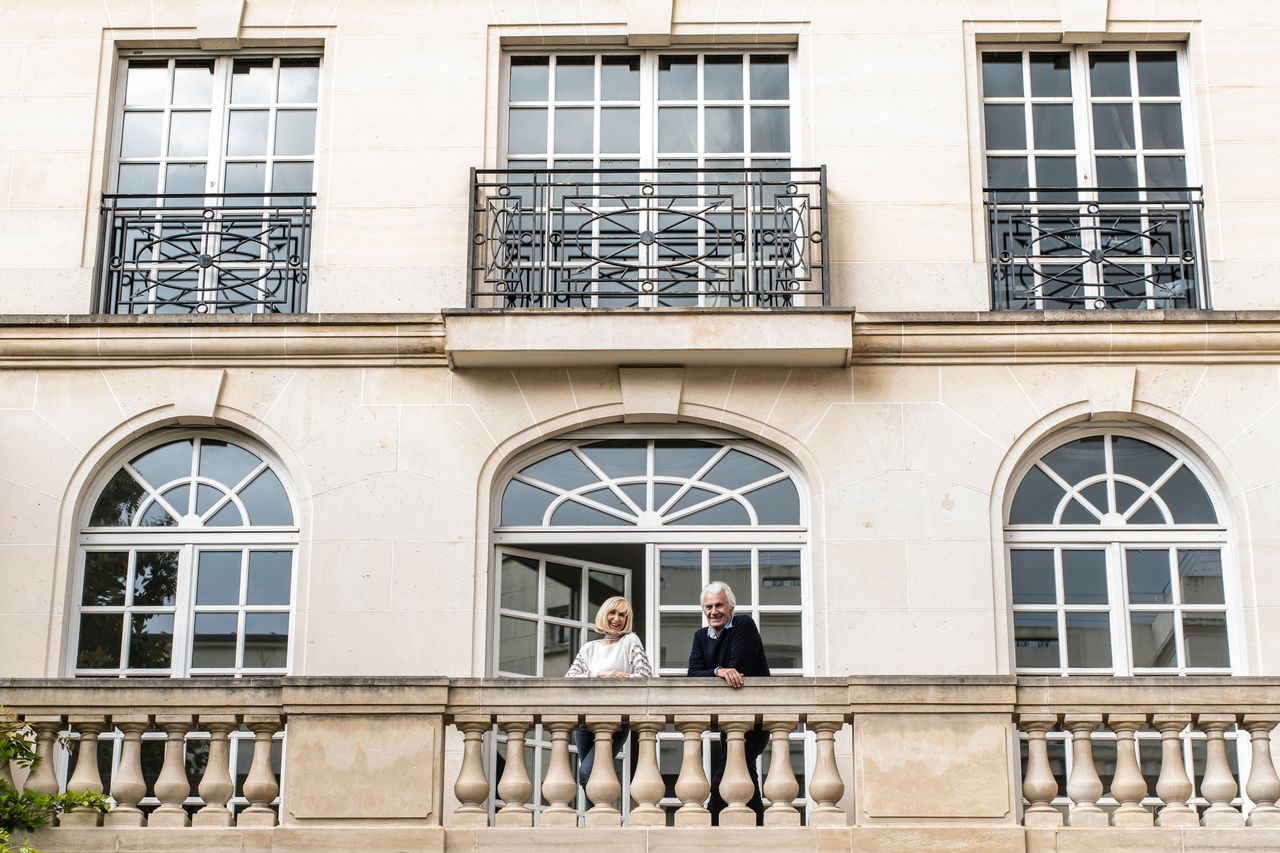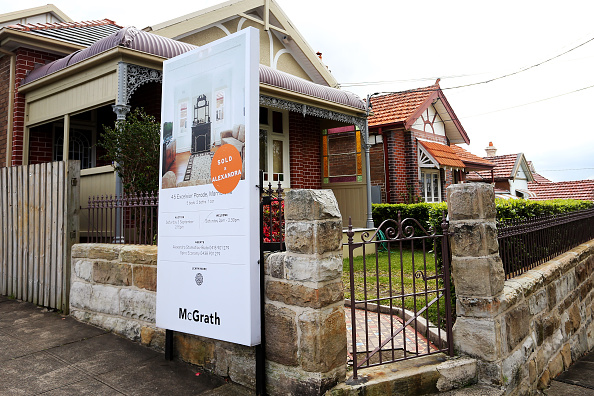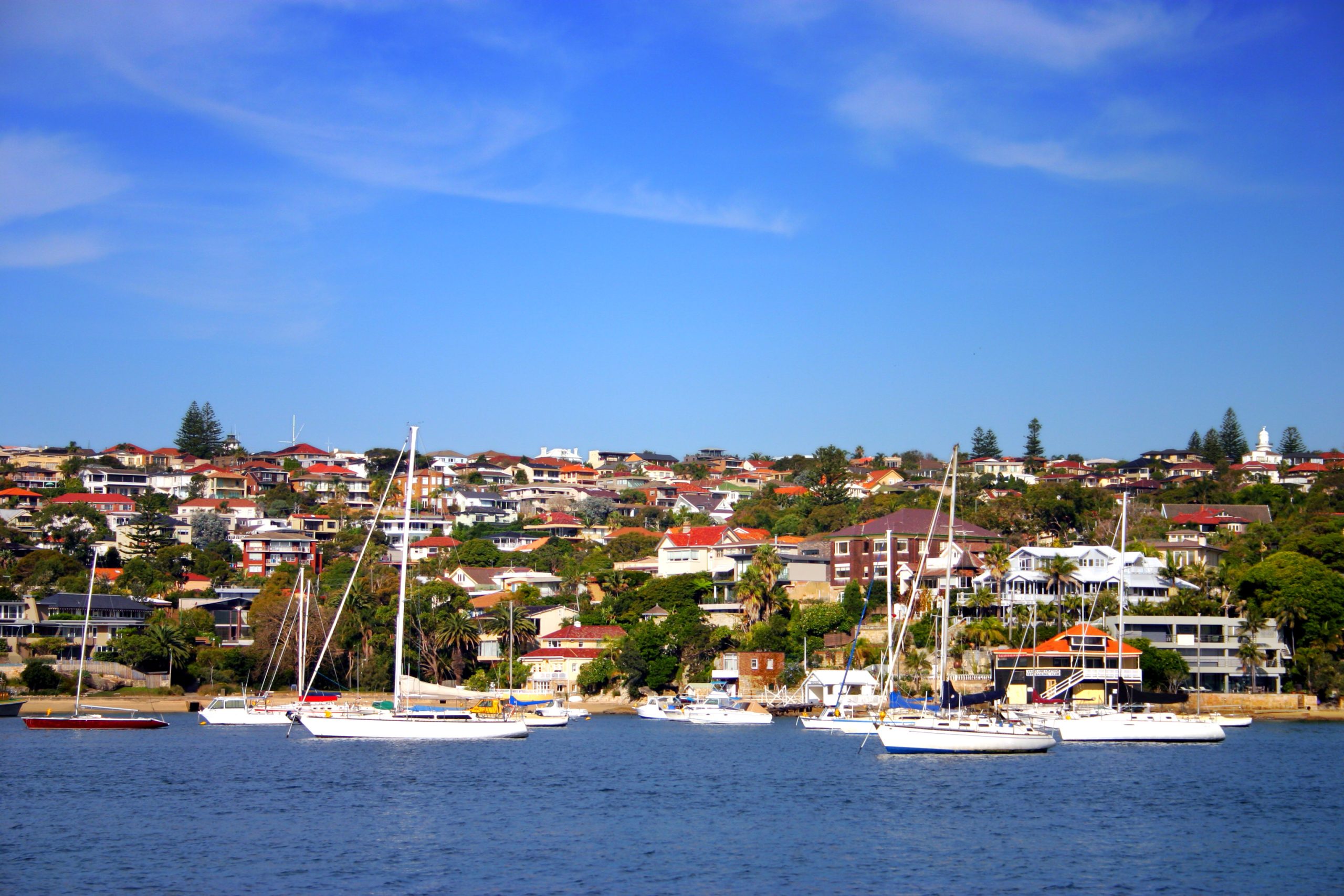Are We Ready to Debate the Housing Crisis and Face Reality
ANALYSIS:
As the final-term Reserve Bank Governor, Philip Lowe, faced the House of Representatives Standing Committee on Economics last Friday, a sigh of relief was shared amongst mortgage holders that “the worst is over” regarding the fight against inflation. It only took 12 interest rate hikes to bring inflation at bay in the quickest contraction in monetary policy in Australia’s modern history. As many Australian mortgage holders are now tipping over the wretched mortgage cliff, we see signs within leading economic indicators such as retail sales, consumer business confidence and mortgage arrears, that there is much more pain to come.
To many people’s surprise, the economy has been incredibly resilient, despite stubbornly persistent rental and service inflation. Raising interest rates is unlikely to reduce these two lingering inflationary pests substantially. As further critical economic data comes to light, we believe the justification for further interest rises will soon abate.
At the same time, Australia’s largest trading partner, China, is experiencing the unthinkable ‘deflation’, which may have a contagion impact on our economy and prompt us to anticipate rate cuts sooner than we expect, leading to revisions in rate forecasts.
As the inflation storm clouds begin to settle down, we can assess the damage caused, especially concerning ongoing cost-of-living crises, inequitable wealth distribution, rental crises and falling labour productivity.
The Structural Problem
The most significant casualty is the housing market, specifically its ability to supply sufficient housing to keep rents stable and improve affordability. At the peak of the interest rate cycle and property unaffordability, it is economically strange that property prices are bucking the trend and have increased 9% from the trough to its current heights, reinforcing that something is fundamentally wrong with the housing market.
The first glaring issue in our current structural problem is rampant rental growth. CoreLogic’s latest July figures confirm annual national rental growth at 9.4% p.a. In the months ahead, there will surely be a vibrant, albeit distressing, public debate examining perhaps one of the biggest threats to our economy and quality of life: the dreaded ‘Housing Crisis’.
Our current Prime Minister, Anthony Albanese, will no doubt attempt to unify the states and territories to find an appropriate, balanced solution to ease the rental crisis and increase the supply of properties as he goes into this week’s cabinet meeting.
Rental Market and Rent Freezes
Sydney, and Australia more broadly, grapple with a clear rental crisis as we observe low vacancy rates (0.9%) and soaring rents.11 With 31% of Australians being renters,12 these issues impact a large, vulnerable demographic, who feel the full impacts associated with cost-of-living pressures. This is playing out not only as an economic issue but as an ongoing social issue that warrants immediate attention from politicians.
11 Vacancy rates: August 2022 (domain.com.au).
12 Housing statistics in Australia: home ownership & rent | Savings.com.au.
13The ACT is the only territory to limit rent increases but tenant groups say gaps in protection leave tenants vulnerable | The Canberra Times | Canberra, ACT.
14 https://www.abc.net.au/news/2023-08-11/asx-markets-business-live-news-philip-lowe-rba-inflation/102716942.
As a result, many people across the political spectrum propose rent control as a solution. However, such measures may backfire, as seen in ACT.13 As Philip Lowe recently made clear, rent control could be a short-term solution to improve housing affordability; however, in the long-term, such a solution will prove inadequate as the fundamental structural problem of low housing supply will persist.14
This is because a cap on rent increases would discourage property development and investment, leading to a lower supply and higher rents in the long-term, as observed in San Francisco and Ireland.15 These rental rules burden property investors as they are not given a reprieve from an increase in mortgage repayments and holding costs, which will drive much-needed investment away from the property sector.
When it comes to increasing supply, property developers and investors are the essential lubrication that enable the property machine to function. Therefore, even rumours of
additional tax for property investors is enough to spook and jeopardise the pipeline for much-needed developments, which is already significantly insufficient to meet current demand.
As Philip Lowe echoed his view on this matter at the parliamentary committee, government interventions in the rental market via rent freezes and caps have immediate short-term gains. However, it does not resolve long-term structural problems and only exacerbates these issues in the future.16
The key to addressing the crisis lies in increasing the housing supply. Government inefficiencies, especially with regard to planning systems, stifle progress. Efforts to aid homebuyers through subsidies, which has been a popular policy in the past, can also inadvertently drive-up housing prices.
Why has so Much Gone so Wrong so Quickly
There has been a long history of housing stock deficiency in Australia; we need to build enough property to meet demand, especially since the immigration reprieve experienced during COVID-19 lockdowns is slowly fading away. Once international borders reopened, net migration skyrocketed, with future forecasts migration and total population growth remaining elevated.
This is placing further pressure on our fragile construction industry, which has experienced a once-in-a-lifetime perfect storm. This is especially so for builders operating within the residential sector, who are locked into fixed-price contracts, and have dealt with construction costs flying up by 30%-40%, La Niña (a climate pattern leading to greater rainfall in Australia), supply chain issues, rising interest costs, labour shortages, as well as COVID-19 lockdowns and disruptions, whilst on thin margins. Unsurprisingly, ASIC data shows 1031 construction companies falling to the liquidator’s knife – more than anytime experienced over the past decade.
Project Feasibility
Traditionally, many medium to large-scale development projects take 3-6 years to obtain necessary approvals, then a further 8-12 months to obtain construction certificates. This is followed by off-plan marketing campaigns to get enough sales to meet financiers’ requirements even before the first shovel hits the ground. Not to mention it also takes time for councils to consider re-zoning.
Construction costs over the past three years have skyrocketed by 30-40% due to inflation and labour shortages within the sector. Land values typically remain constant and do not provide room for adjustment. This has resulted in many approved projects being shelved as developers wait for property prices to increase enough to compensate for construction costs, holding costs and greater demand for purchasers to buy off-the-plan.
Ultimately, the supply component of the property market is driven by the private sector – an army of mum-and-dad investors to established property developers. Unfortunately, making money on property projects is at one of its most challenging times in decades, further contributing to the challenge of providing property supply to the system.
Planning and Rezoning Process
We also want to avoid knee-jerk, desperate planning outcomes as well as unnecessary rezoning of more farmland and urban sprawl, which have only been short-term fixes to the underlying problem of inadequate supply; however, in most cases, this does not generate net gains as the benefits are outweighed by government spending and immense costs on infrastructure projects.
It takes 4-8 years for councils to consider large-scale rezoning projects properly. Nevertheless, we should look at best practices and improve the bureaucratic red tape to avoid future property price and rental increases; however, make no mistake – there is no quick fix.
Solutions to the housing crisis will involve all levels of government coordination, patience, well-measured policies, and a deep understanding of the delicate balance between different stakeholders’ interests.
In short, the housing crisis is here to stay for several years. We will continue having to talk about it and lay blame to governments, developers, builders, and investors. The government’s job is to make the planning system more efficient, promote property development and investment, and let the market deliver supply based on demand.
Ultimately, market forces will result in property prices remaining elevated and, over time, property will attract capital once the perceived market risk normalises. We should then see the necessary supply to meet demand.
Msquared Capital is a private credit provider with investment opportunities backed by quality property along the Eastern Seaboard; we ensure that all investment opportunities are based on risk-to-reward as our core offering and performance. Mortgage funds perform well during volatile times, and capital preservation is regular, with a reliable monthly income that gives our investors peace of mind.
This stylish family home combines a classic palette and finishes with a flexible floorplan
Just 55 minutes from Sydney, make this your creative getaway located in the majestic Hawkesbury region.
Ahead of the Games, a breakdown of the city’s most desirable places to live
PARIS —Paris has long been a byword for luxurious living. The traditional components of the upscale home, from parquet floors to elaborate moldings, have their origins here. Yet settling down in just the right address in this low-rise, high-density city may be the greatest luxury of all.
Tradition reigns supreme in Paris real estate, where certain conditions seem set in stone—the western half of the city, on either side of the Seine, has long been more expensive than the east. But in the fashion world’s capital, parts of the housing market are also subject to shifting fads. In the trendy, hilly northeast, a roving cool factor can send prices in this year’s hip neighborhood rising, while last year’s might seem like a sudden bargain.
This week, with the opening of the Olympic Games and the eyes of the world turned toward Paris, The Wall Street Journal looks at the most expensive and desirable areas in the City of Light.
The Most Expensive Arrondissement: the 6th
Known for historic architecture, elegant apartment houses and bohemian street cred, the 6th Arrondissement is Paris’s answer to Manhattan’s West Village. Like its New York counterpart, the 6th’s starving-artist days are long behind it. But the charm that first wooed notable residents like Gertrude Stein and Jean-Paul Sartre is still largely intact, attracting high-minded tourists and deep-pocketed homeowners who can afford its once-edgy, now serene atmosphere.
Le Breton George V Notaires, a Paris notary with an international clientele, says the 6th consistently holds the title of most expensive arrondissement among Paris’s 20 administrative districts, and 2023 was no exception. Last year, average home prices reached $1,428 a square foot—almost 30% higher than the Paris average of $1,100 a square foot.
According to Meilleurs Agents, the Paris real estate appraisal company, the 6th is also home to three of the city’s five most expensive streets. Rue de Furstemberg, a secluded loop between Boulevard Saint-Germain and the Seine, comes in on top, with average prices of $2,454 a square foot as of March 2024.
For more than two decades, Kyle Branum, a 51-year-old attorney, and Kimberly Branum, a 60-year-old retired CEO, have been regular visitors to Paris, opting for apartment rentals and ultimately an ownership interest in an apartment in the city’s 7th Arrondissement, a sedate Left Bank district known for its discreet atmosphere and plutocratic residents.
“The 7th was the only place we stayed,” says Kimberly, “but we spent most of our time in the 6th.”
In 2022, inspired by the strength of the dollar, the Branums decided to fulfil a longstanding dream of buying in Paris. Working with Paris Property Group, they opted for a 1,465-square-foot, three-bedroom in a building dating to the 17th century on a side street in the 6th Arrondissement. They paid $2.7 million for the unit and then spent just over $1 million on the renovation, working with Franco-American visual artist Monte Laster, who also does interiors.
The couple, who live in Santa Barbara, Calif., plan to spend about three months a year in Paris, hosting children and grandchildren, and cooking after forays to local food markets. Their new kitchen, which includes a French stove from luxury appliance brand Lacanche, is Kimberly’s favourite room, she says.
Another American, investor Ashley Maddox, 49, is also considering relocating.
In 2012, the longtime Paris resident bought a dingy, overstuffed 1,765-square-foot apartment in the 6th and started from scratch. She paid $2.5 million and undertook a gut renovation and building improvements for about $800,000. A centrepiece of the home now is the one-time salon, which was turned into an open-plan kitchen and dining area where Maddox and her three children tend to hang out, American-style. Just outside her door are some of the city’s best-known bakeries and cheesemongers, and she is a short walk from the Jardin du Luxembourg, the Left Bank’s premier green space.
“A lot of the majesty of the city is accessible from here,” she says. “It’s so central, it’s bananas.” Now that two of her children are going away to school, she has listed the four-bedroom apartment with Varenne for $5 million.
The Most Expensive Neighbourhoods: Notre-Dame and Invalides
Garrow Kedigian is moving up in the world of Parisian real estate by heading south of the Seine.
During the pandemic, the Canada-born, New York-based interior designer reassessed his life, he says, and decided “I’m not going to wait any longer to have a pied-à-terre in Paris.”
He originally selected a 1,130-square-foot one-bedroom in the trendy 9th Arrondissement, an up-and-coming Right Bank district just below Montmartre. But he soon realised it was too small for his extended stays, not to mention hosting guests from out of town.
After paying about $1.6 million in 2022 and then investing about $55,000 in new decor, he put the unit up for sale in early 2024 and went house-shopping a second time. He ended up in the Invalides quarter of the 7th Arrondissement in the shadow of one Paris’s signature monuments, the golden-domed Hôtel des Invalides, which dates to the 17th century and is fronted by a grand esplanade.
His new neighbourhood vies for Paris’s most expensive with the Notre-Dame quarter in the 4th Arrondissement, centred on a few islands in the Seine behind its namesake cathedral. According to Le Breton, home prices in the Notre-Dame neighbourhood were $1,818 a square foot in 2023, followed by $1,568 a square foot in Invalides.
After breaking even on his Right Bank one-bedroom, Kedigian paid $2.4 million for his new 1,450-square-foot two-bedroom in a late 19th-century building. It has southern exposures, rounded living-room windows and “gorgeous floors,” he says. Kedigian, who bought the new flat through Junot Fine Properties/Knight Frank, plans to spend up to $435,000 on a renovation that will involve restoring the original 12-foot ceiling height in many of the rooms, as well as rescuing the ceilings’ elaborate stucco detailing. He expects to finish in 2025.
Over in the Notre-Dame neighbourhood, Belles demeures de France/Christie’s recently sold a 2,370-square-foot, four-bedroom home for close to the asking price of about $8.6 million, or about $3,630 a square foot. Listing agent Marie-Hélène Lundgreen says this places the unit near the very top of Paris luxury real estate, where prime homes typically sell between $2,530 and $4,040 a square foot.
The Most Expensive Suburb: Neuilly-sur-Seine
The Boulevard Périphérique, the 22-mile ring road that surrounds Paris and its 20 arrondissements, was once a line in the sand for Parisians, who regarded the French capital’s numerous suburbs as something to drive through on their way to and from vacation. The past few decades have seen waves of gentrification beyond the city’s borders, upgrading humble or industrial districts to the north and east into prime residential areas. And it has turned Neuilly-sur-Seine, just northwest of the city, into a luxury compound of first resort.
In 2023, Neuilly’s average home price of $1,092 a square foot made the leafy, stately community Paris’s most expensive suburb.
Longtime residents, Alain and Michèle Bigio, decided this year is the right time to list their 7,730-square-foot, four-bedroom townhouse on a gated Neuilly street.
The couple, now in their mid 70s, completed the home in 1990, two years after they purchased a small parcel of garden from the owners next door for an undisclosed amount. Having relocated from a white-marble château outside Paris, the couple echoed their previous home by using white- and cream-coloured stone in the new four-story build. The Bigios, who will relocate just back over the border in the 16th Arrondissement, have listed the property with Emile Garcin Propriétés for $14.7 million.
The couple raised two adult children here and undertook upgrades in their empty-nester years—most recently, an indoor pool in the basement and a new elevator.
The cool, pale interiors give way to dark and sardonic images in the former staff’s quarters in the basement where Alain works on his hobby—surreal and satirical paintings, whose risqué content means that his wife prefers they stay downstairs. “I’m not a painter,” he says. “But I paint.”
The Trendiest Arrondissement: the 9th
French interior designer Julie Hamon is theatre royalty. Her grandfather was playwright Jean Anouilh, a giant of 20th-century French literature, and her sister is actress Gwendoline Hamon. The 52-year-old, who divides her time between Paris and the U.K., still remembers when the city’s 9th Arrondissement, where she and her husband bought their 1,885-square-foot duplex in 2017, was a place to have fun rather than put down roots. Now, the 9th is the place to do both.
The 9th, a largely 19th-century district, is Paris at its most urban. But what it lacks in parks and other green spaces, it makes up with nightlife and a bustling street life. Among Paris’s gentrifying districts, which have been transformed since 2000 from near-slums to the brink of luxury, the 9th has emerged as the clear winner. According to Le Breton, average 2023 home prices here were $1,062 a square foot, while its nearest competitors for the cool crown, the 10th and the 11th, have yet to break $1,011 a square foot.
A co-principal in the Bobo Design Studio, Hamon—whose gut renovation includes a dramatic skylight, a home cinema and air conditioning—still seems surprised at how far her arrondissement has come. “The 9th used to be well known for all the theatres, nightclubs and strip clubs,” she says. “But it was never a place where you wanted to live—now it’s the place to be.”
With their youngest child about to go to college, she and her husband, 52-year-old entrepreneur Guillaume Clignet, decided to list their Paris home for $3.45 million and live in London full-time. Propriétés Parisiennes/Sotheby’s is handling the listing, which has just gone into contract after about six months on the market.
The 9th’s music venues were a draw for 44-year-old American musician and piano dealer, Ronen Segev, who divides his time between Miami and a 1,725-square-foot, two-bedroom in the lower reaches of the arrondissement. Aided by Paris Property Group, Segev purchased the apartment at auction during the pandemic, sight unseen, for $1.69 million. He spent $270,000 on a renovation, knocking down a wall to make a larger salon suitable for home concerts.
During the Olympics, Segev is renting out the space for about $22,850 a week to attendees of the Games. Otherwise, he prefers longer-term sublets to visiting musicians for $32,700 a month.
Most Exclusive Address: Avenue Junot
Hidden in the hilly expanses of the 18th Arrondissement lies a legendary street that, for those in the know, is the city’s most exclusive address. Avenue Junot, a bucolic tree-lined lane, is a fairy-tale version of the city, separate from the gritty bustle that surrounds it.
Homes here rarely come up for sale, and, when they do, they tend to be off-market, or sold before they can be listed. Martine Kuperfis—whose Paris-based Junot Group real-estate company is named for the street—says the most expensive units here are penthouses with views over the whole of the city.
In 2021, her agency sold a 3,230-square-foot triplex apartment, with a 1,400-square-foot terrace, for $8.5 million. At about $2,630 a square foot, that is three times the current average price in the whole of the 18th.
Among its current Junot listings is a 1930s 1,220-square-foot townhouse on the avenue’s cobblestone extension, with an asking price of $2.8 million.
This stylish family home combines a classic palette and finishes with a flexible floorplan
Just 55 minutes from Sydney, make this your creative getaway located in the majestic Hawkesbury region.


















